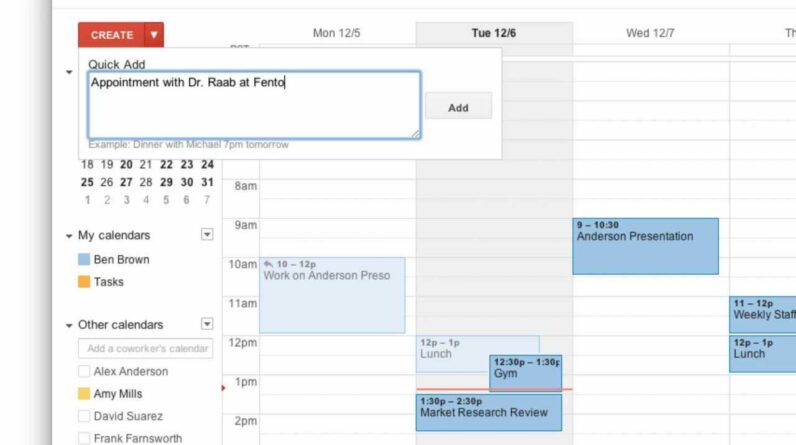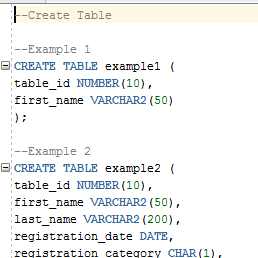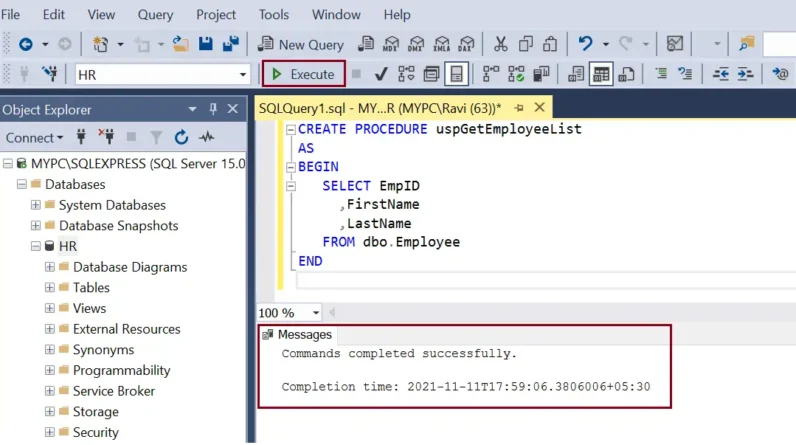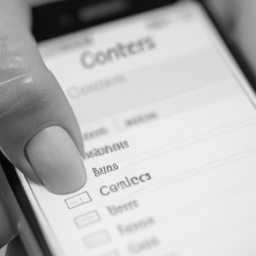
Hey there! In this article, I’ll show you how to remove numbers from your iPhone contacts. Whether you want to clean up your contact list or simply get rid of outdated or unused numbers, I’ve got you covered. By following these simple steps, you’ll be able to easily manage and organize your contact list without any hassle or confusion.
First off, open the Contacts app on your iPhone. Next, select the contact from which you want to remove the number. Scroll down to the bottom of the contact details and tap on the “Edit” button. Now, you can simply delete the number you want to remove by tapping on the minus (-) button beside it. Once you’ve removed the number, tap on “Done” to save the changes. And voila! The number has been successfully removed from your iPhone contact. By using this method, you can easily remove unwanted or outdated numbers from your contact list and keep it neat and tidy.
Table of Contents
How to Remove Numbers from iPhone Contacts
Are you tired of having a cluttered contact list on your iPhone? Do you find it difficult to locate the contacts you need because your list is filled with outdated or unnecessary phone numbers? If so, it’s time to take action and remove those unwanted numbers from your iPhone contacts. In this article, we will explore three different methods to help you achieve a more organized and efficient contact management system on your iPhone.
Method 1: Manually Delete Phone Numbers
The first method to remove numbers from your iPhone contacts is the most straightforward and doesn’t require any additional apps or tools. Simply follow the steps below:
Step 1: Open Contacts App on iPhone
Locate and open the Contacts app on your iPhone. This app is usually found on the home screen or in the dock at the bottom of the screen.
Step 2: Select the Contact with the Number to be Removed
Scroll through your contact list and select the contact that contains the number you want to delete. Tap on their name to open their contact details.
Step 3: Scroll down to the Phone Number Section
Once you have the contact open, scroll down until you reach the phone number section. Here, you will find all the phone numbers associated with that contact.
Step 4: Tap on Edit
To make changes to the contact information, tap on the “Edit” button located in the top-right corner of the screen.
Step 5: Delete the Number
Locate the phone number you want to remove and tap on the red minus (-) button next to it. Confirm the deletion by tapping on the “Delete” button that appears.
And that’s it! The selected phone number will be removed from the contact, leaving you with a more streamlined and organized list.
Method 2: Use Third-Party Apps to Remove Numbers
If you prefer a more automated and efficient approach to remove numbers from your iPhone contacts, you can consider using third-party apps. The App Store offers a variety of apps specifically designed for contact management. Follow the steps below to utilize this method:
Step 1: Install a Trusted Third-Party App from the App Store
Open the App Store on your iPhone and search for contact management apps. Choose a trusted app with positive reviews and download it onto your device.
Step 2: Open the App and Grant Necessary Permissions
Once the app is installed, open it and follow the on-screen instructions to grant necessary permissions, such as access to your contacts.
Step 3: Select the Contact from Which to Remove the Number
Navigate to the contact you want to edit within the app. This can usually be done by searching for the contact’s name or scrolling through your contact list within the app.
Step 4: Follow the App’s Instructions to Remove the Number
Each app may have a different interface and set of instructions. Follow the app’s guidance to remove the desired number from the contact. This may involve tapping on buttons, selecting the number, and choosing to delete or edit it.
Using third-party apps can simplify the process of removing numbers from your iPhone contacts and provide you with additional features and functionalities for efficient contact management.
Method 3: Use iCloud to Remove Numbers
If you prefer to remove numbers from your iPhone contacts using your iCloud account, follow the steps below:
Step 1: Open Settings on your iPhone
Locate and tap on the “Settings” app on your iPhone’s home screen.
Step 2: Tap on your Apple ID at the Top of the Screen
Within the Settings app, tap on your Apple ID name, which is displayed at the top of the screen. This will open your Apple ID settings.
Step 3: Scroll down and Tap on iCloud
Scroll down until you find the “iCloud” option. Tap on it to access your iCloud settings.
Step 4: Find and Tap on Contacts
Within the iCloud settings, locate the “Contacts” option and tap on it. This will display your contacts synced with your iCloud account.
Step 5: Toggle off the Contacts Button
To remove contacts from your iPhone, tap on the toggle switch next to “Contacts” to turn it off. A confirmation pop-up may appear asking if you want to delete the contacts. Confirm the deletion by selecting the appropriate option.
Step 6: Confirm the Deletion
After disabling the Contacts syncing with iCloud, your iPhone will prompt you to either delete or keep the contacts on your device. Choose the option to delete the contacts to remove them from your iPhone.
Using iCloud to remove numbers from your iPhone contacts provides an easy way to manage your contacts across all your Apple devices.
Benefits of Removing Numbers from iPhone Contacts
Now that you know how to remove numbers from your iPhone contacts, let’s explore the benefits of decluttering and organizing your contact list:
1. Organize contacts easily
Removing unnecessary numbers allows you to organize your contacts more effectively. You can create groups, add notes, and assign specific categories to each contact, making it easier to find and communicate with them.
2. Reduce clutter in your contact list
Having excessive numbers in your contact list can make it challenging to locate the information you need quickly. By removing unwanted numbers, you can declutter your list and focus on essential and relevant contacts.
3. Enhance the efficiency of your contact management
With a streamlined and well-organized contact list, you can efficiently manage your contacts. This includes keeping track of important dates, managing communication preferences, and ensuring accurate information for each contact.
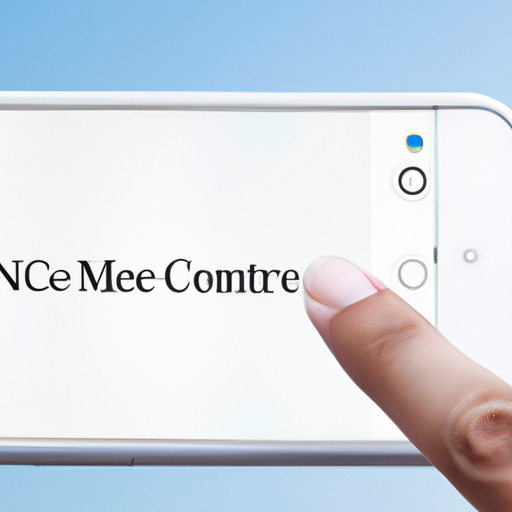
Considerations before Removing Numbers from iPhone Contacts
Before you embark on the process of removing numbers from your iPhone contacts, keep the following considerations in mind:
1. Back up your contacts before making any changes
It’s always a good idea to back up your contacts before making any changes, whether manually or using third-party apps. This ensures that you have a copy of your contacts in case of accidental deletions or data loss.
2. Ensure you have alternative contact information for important contacts
Before removing any numbers, make sure you have alternative contact information for important contacts. This can include their email address or an alternative phone number. This ensures that you can still reach out to them even if their primary contact number is deleted.
3. Double-check before deleting any numbers
Before confirming the deletion of any numbers, double-check that you are removing the correct contact and the intended number. This helps minimize the risk of mistakenly deleting critical information.
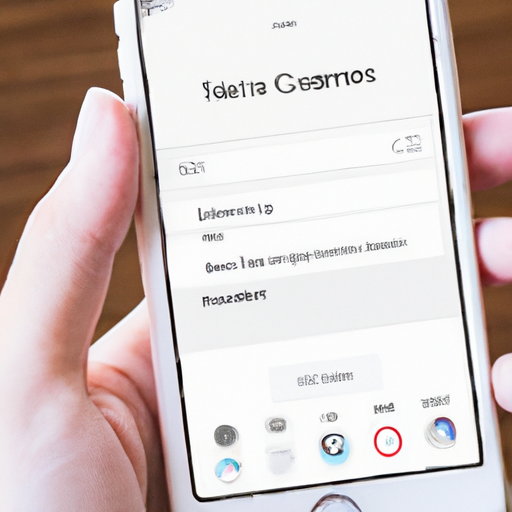
Conclusion
Removing numbers from iPhone contacts can be easily done using various methods available. Whether you choose to manually delete numbers, use third-party apps, or utilize iCloud, the goal is to achieve a more organized and clutter-free contact list. Choose the method that suits your needs best and enjoy a more streamlined and efficient contact management system on your iPhone.






